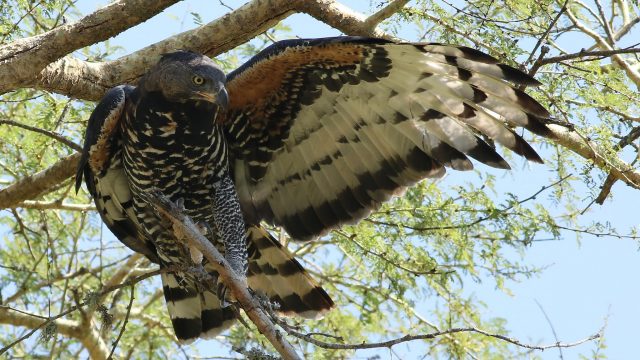Whether it’s intimidating predatory birds with talons as big as your fist or a docile mousebird of many colors, they’re all equally exciting to see in their natural habitat in Mozambique. The country is a hot spot for rainbow-colored birds that can be seen anywhere from bustling Matola to deep in the forest. If you’re planning a trip to the area, we strongly suggest you venture into nature to see the stunning birds. So book that safari trip, bring your best binoculars and start looking in the skies and trees, here are some of the most beautiful birds in Mozambique.
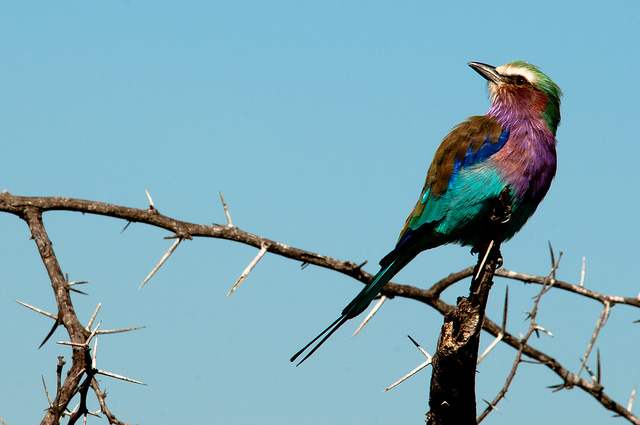
Courtesy of Brian Fitzharris/Flickr.com
Lilac-Breasted Roller
It’s hard not to smile when you spot this rainbow-colored bird perching on a tree. While this bird is the national bird of Kenya, they are sighted all over Mozambique, especially in open woodlands and savanna. The birds are pretty shy, so you won’t find them in urban areas, giving you an even more of a reason to book that safari.
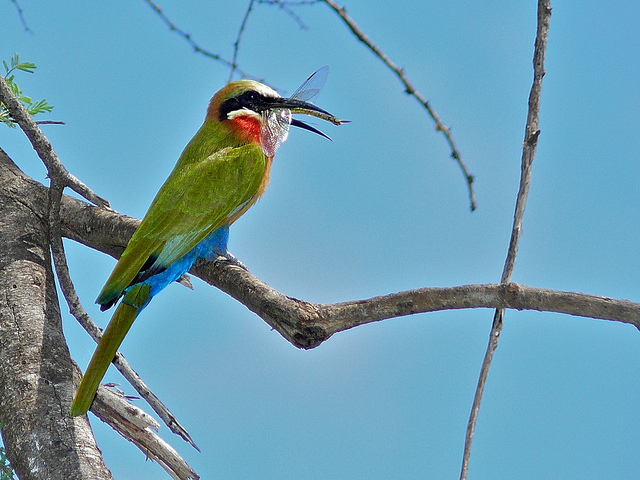
Courtesy of Bernard DUPONT/Flickr.com
White-fronted Bee-eater
Cute little thing isn’t it? The birds earned their name from (what else?) their bee-eating habits and they’re easily identified by their unique markings. The birds live in burrowed out holes in cliffs and spend their mornings perched from low-hanging branches before leaping to make their attack on bees.
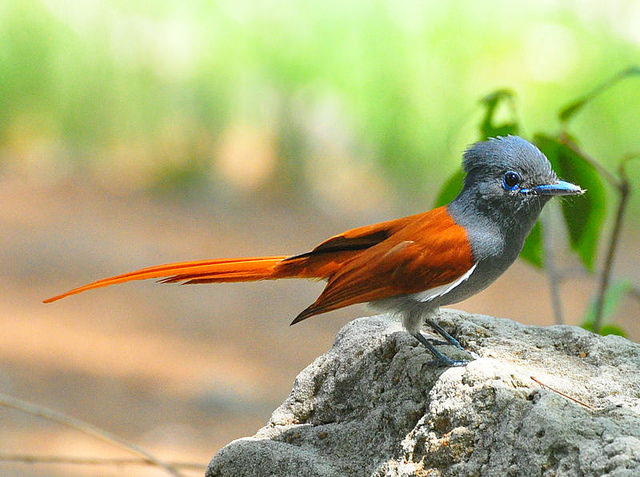
Courtesy of Wagon16/Flickr.com
Paradise Flycatcher
While the bee eaters are busy hunting for bees, someone’s gotta terrorize the flies and that’s where the African Paradise Flycatchers come in. You can easily spot them due to their long tails and whistling.
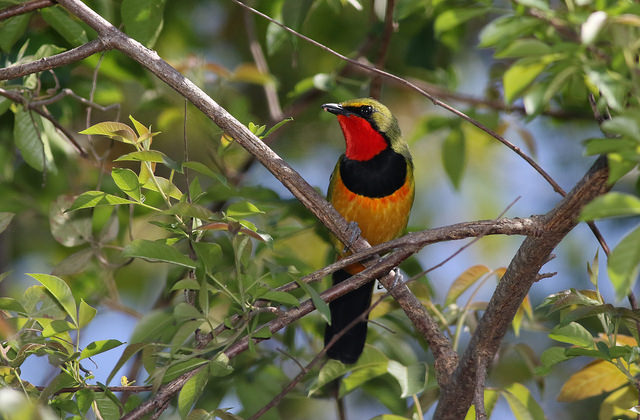
Courtesy of Derek Keats/Flickr.com
Bushshrike
Bushshrikes love their insects too, along with berries and fruit. Like the flycatcher, they’re known to belt out songs that many would consider unpleasant to the ear. But don’t tell them that.
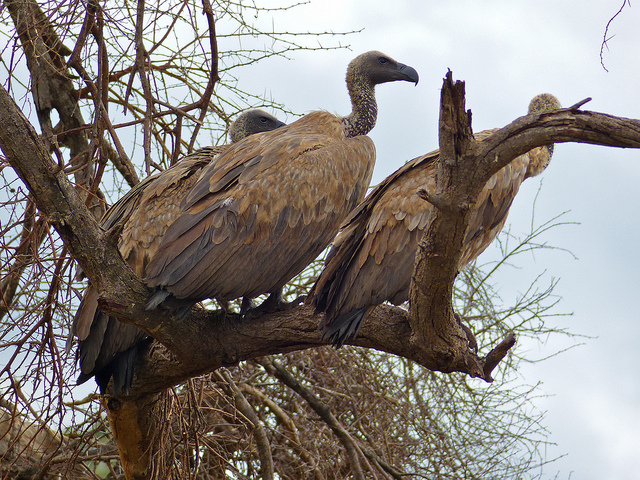
Courtesy of Bernard DUPONT/Flickr.com
White-backed Vultures
Beauty is in the eye of the beholder, at least that’s what we tell the White-backed vultures that spend all day circling over land to look for carcasses. If we think about it, they might be the planet’s most humane carnivores since they’ll only feast on the dead.

Courtesy of Derek Keats/Flickr.com
African Harrier-Hawk
Smaller birds live in fear of the Harrier-Hawks that lives in the desert. You’ll find them resting on palm trees or doing a nose dive into a nest of songbirds. Unlike most birds, the hawk has a unique ability to climb, thanks to its double-jointed legs (bad news for the little birds).
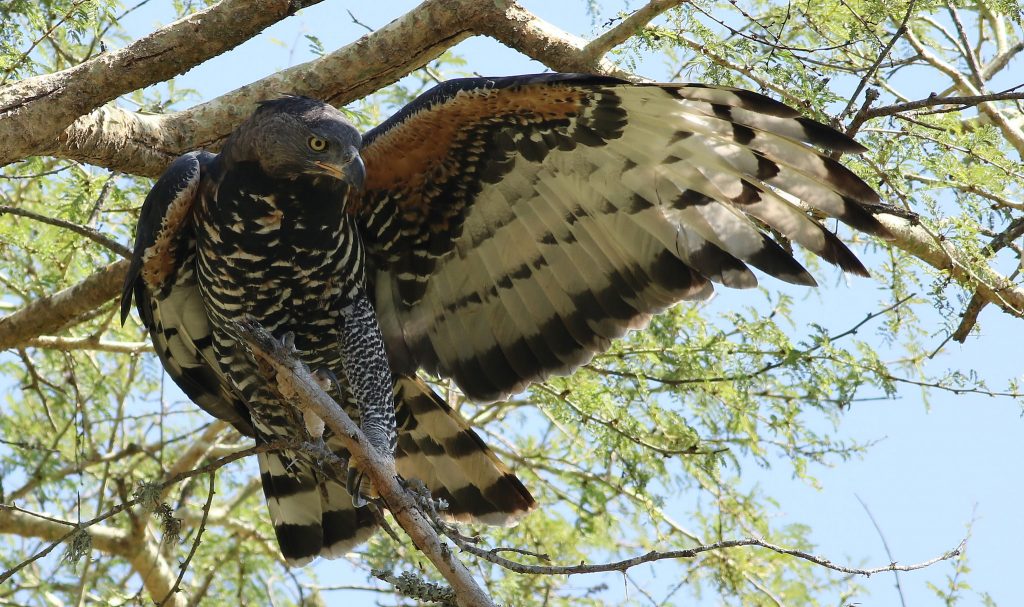
Courtesy of Derek Keats/Flickr.com
Crowned Eagle
If you think the Harrier-Hawks are scary, then wait until you meet the Crowned Eagle, a bird so intimidating that it’s rumored that they’ve even feasted on monkeys and hyraxes. They usually put their prey out of misery by crushing its skull before resuming dinner.
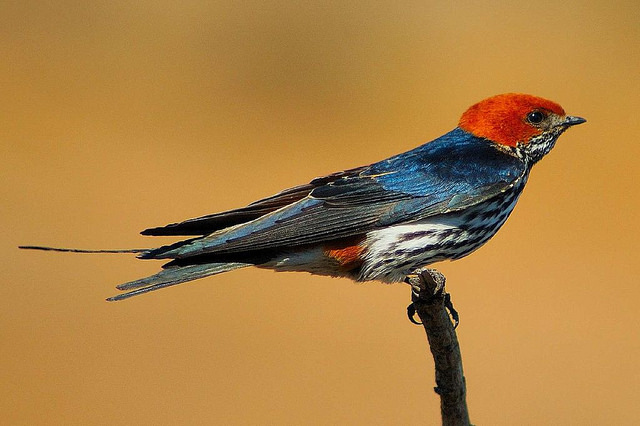
Courtesy of wagon16/Flickr.com
Lesser Striped Swallow
You’ll find them in their mud nest (hey don’t knock on their homes) that they’ve worked hard to build. Birders love to spot this species due to their unique black and white checkered patterns on their chests.

Courtesy of Chris Eason/Flickr.com
African Jacana
The African Jacanas can be recognized by its long spiny legs in the shade of robin’s egg blue (no robins in sight). They dwell on the surface of water and nitpick at floating insects. If you spot a female Jacana, squint hard, you might see a baby bird being carried underneath her wings.
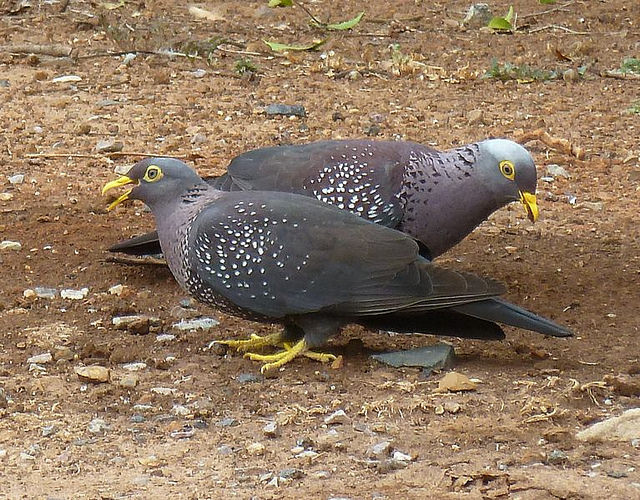
Courtesy of wagon16/Flickr.com
African Olive Pigeon
Does it seem like no matter where in the world you go, you just can’t seem to escape pigeons? Mozambique has its own kind, the African Olive Pigeon that looks slightly different from the ones you’ll find pecking on a few days pizza in a New York subway. If they were to make a fashion statement, they would tell you matching is a must, hence the bright yellow feet, beak and eyes.
More from AFKTravel:
20 Beautiful Birds Of Botswana
Birder’s Delight: The Best Places For Bird Watching In North Africa
QUIZ: Can You Name These African Birds?
